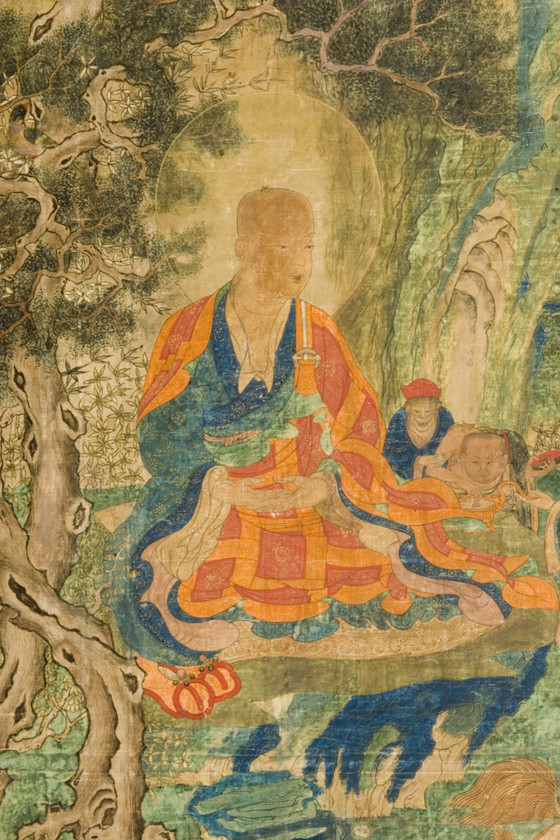The Arhat Chudapantaka, From a Tibetan set of the Sixteen Great Arhats


Please log in to add this item to your gallery.
View comments
No comments have been posted yet.
Add a comment
Please log in to add comments.
Please log in to add tags.
* Nearly 20,000 images of artworks the museum believes to be in the public domain are available to download on this site.
Other images may be protected by copyright and other intellectual property rights.
By using any of these images you agree to LACMA's Terms of Use.
The Arhat Chudapantaka, From a Tibetan set of the Sixteen Great Arhats
Eastern Tibet, Kham region, a Trungpa Monastery in Surmang, circa early 17th century; later overpainting
Paintings
Mineral pigments and gold on silk
Sight: 31 x 21 in. (78.74 x 53.34 cm); Framed: 38 x 27 1/4 x 3/4 in. (96.52 x 69.22 x 1.91 cm)
Gift of the James and Paula Coburn Foundation (M.2005.154.4)
Not currently on public view


